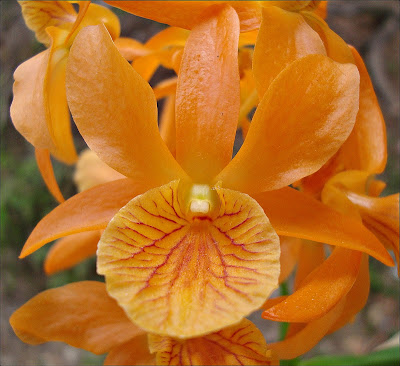

Dendrobium kingianum Bidwill ex Lindley 1844
The flowers of the species are quite color variable and have a full range of colors between red, purple, white striped and purplish blue.
Credits of the text: http://www.orchidspecies.com


Dendrobium kingianum Bidwill ex Lindley 1844
The flowers of the species are quite color variable and have a full range of colors between red, purple, white striped and purplish blue.
Credits of the text: http://www.orchidspecies.com







Oncidium flexuosum C.Loddiges 1820
Found in Brazil, Argentina, Uruguay and Paraguay in the coastal mountains and along inland creeks and marshes at elevations of 500 to 800 meters as a small to medium sized, cool to hot growing, epiphytic orchid that has narrowly ovoid or avate-elliptic, compressed, ancipitous pseudobulbs carrying 2 apical, spreading, slightly coriaceous, narrolwy oblong-ligulate, obtuse or abruptly acute leaves that blooms on an erect to arcuate, to 3' [90 cm] long, dull purple, paniculate inflorescence with 4 to 10, long ascending branches with to 10 flowers and narrowly triangular, very short, acute floral bracts and has many, small flowers occuring most often in the fall and winter.
Credits of the text: http://www.orchidspecies.com
















Found in Peru, southern Brazil and Paraguay in cool montane forests as well as the lowlands along river banks as a small sized, cool to hot growing epiphyte with oval, elongate psuedobulbs with one or two, apical, linear-oblong, mucronate leaves and blooms with an erect, short to 6" [15 cm] fractiflex, loosely 2 to 6 flowered raceme occuring in the summer through fall. Said to be very similar or conspecific with O. uniflorum. Mount in tree fern or pot with a finer mixture, give hot to cool temperatures, high humidity, bright indirect light and good air circulation. Water often while growing and then less as the pseudobulbs mature for a dry winter rest.
This species has two similar orchid relatives, O uniflorum and O regentii but differs in the larger than 20 cm plant, an inflorescence much shorter than the leaf, large flowers 3.5 cm from dorsal to lateral sepal, a lip that is slightly smaller than the lateral petals, large lateral lobes of the lip in relation to the midlobe, a round isthmus with ciliate margins, a column larger than 5mm a large stigma and a tabula infrastigmata that is longer than wide.
Credits of the text: http://www.orchidspecies.com